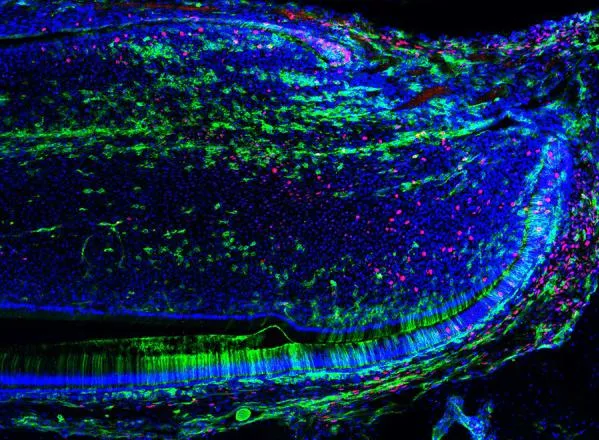24 November 2017
Natural tooth repair method discovered by King's College London can also be used on common cavities, protecting teeth from further damage
Earlier this year a new method of tooth repair through stimulating the renewal of living stem cells in tooth pulp was discovered by a team of researchers at King’s College London. The team have made new developments in this research and have found that this cost-effective method of enhancing reparative capacity in teeth is applicable for non-exposed pulp; the more common form of cavities.

When teeth suffer damage either by decay or trauma, there are three layers that may be affected; the outer enamel, dentine, which is the middle part that shields the vital part of the tooth, and the inner part of the tooth; the soft dental pulp.
The previous research found that a drug could help protect this third layer by stimulating the production of the middle layer, dentine, which is a tooth’s natural method of repair. In the latest study, published today in the Journal of Dental Research, the team have discovered that their simple method also works on the second layer without pulp exposure, by increasing the natural secretion of reactionary dentin.
“Early in the year we showed that we can stimulate natural tooth repair by activating resident tooth stem cells. This approach, which is simple and cost effective, was used in teeth that had the vital layer (dental pulp) of the tooth exposed to the outer environment,” explains Professor Sharpe Paul Sharpe, Director of the Centre of Craniofacial & Regenerative Biology at King’s College London.
“Now we have demonstrated that this same approach can be used in situations of shallow dentine damage where differentiated cells (not stem cells) required activation. This type of damage to the tooth is the most common case that dentists see in the dental practice.”
The findings may now open many doors for future clinical products: “At present there are no dental materials that act through the Wnt cascade. By showing that we can use small molecules for activation of Wnt/β-catenin signalling after shallow and deep dental injury, we open doors to have materials made that trigger the natural path of tooth repair, either in exposed dental pulp or non-exposed dental pulp,” explains Vitor Neves, PhD student at the Dental Institute at King’s College London.
“The reinforced dentine would protect the dental pulp from irreversible pulpitis, meaning that minor cavities could be stopped before they turn into more serious issues, where root canals or tooth extractions are required.”
As with the previous study, the team used biodegradable collagen sponges to deliver the treatment and showed that the small molecules drugs can penetrate the intact dentine and reach the target cells in the pulp. Collagen sponges are however unlikely to be suitable for clinical delivery in this case and the team are currently working on a new delivery system.
Papers mentioned in this release:
Regulation of reactionary dentine formation by Paul Sharpe and Vitor Neves published in the Journal of Dental Research on Friday 24 November, 2017, 0.01 GMT.

